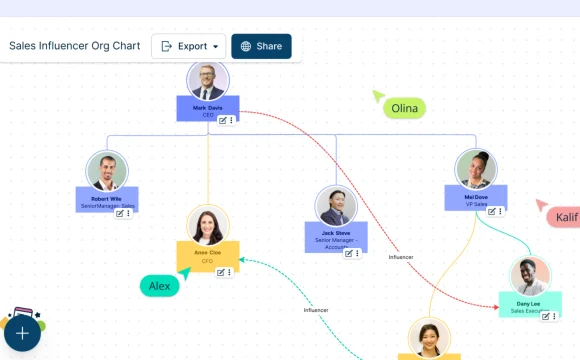Let’s be honest. For years, the “ideal” sales rep was painted with a very specific brush: loud, charismatic, a natural schmoozer. They were the ones who could work a room and think on their feet. But what if that picture is not just incomplete, but actively holding your team back?
Here’s the deal. A neurodiversity-inclusive approach to sales management isn’t about charity or checking a box. It’s a powerful, strategic advantage. Neurodiversity refers to the natural variation in human brain function and behavioral traits. It includes conditions like Autism, ADHD, Dyslexia, and others. By creating an environment where these different kinds of minds can thrive, you’re not just building a team—you’re building an engine for innovation and resilience.
Why Neurodiversity is a Sales Superpower
Think of your sales team like a toolbox. If you only have hammers, you’re going to treat every problem like a nail. A neurodiverse team gives you a full toolkit. You get the screwdrivers, the wrenches, the precision instruments. Each one excels in a different scenario.
Consider these strengths often associated with neurodivergent individuals:
- Hyperfocus & Deep Dives (common in Autism & ADHD): Imagine a rep who can consume and synthesize a potential client’s entire industry landscape, their recent press releases, their financial reports… and then craft a pitch so specific it feels bespoke. That’s hyperfocus in action.
- Pattern Recognition & Systematizing (common in Autism): This individual might spot a subtle trend in customer churn data that everyone else missed. They can deconstruct a successful sales call into a repeatable process, creating a playbook that elevates the entire team.
- Creative Problem-Solving & Big-Picture Thinking (common in ADHD & Dyslexia): When a standard approach fails, this person can pivot on a dime. They connect seemingly unrelated dots, offering out-of-the-box solutions that can save a stalled deal.
- Authenticity & Honesty: Many neurodivergent people communicate with a directness that clients find incredibly refreshing. No corporate fluff, just genuine, trustworthy interaction.
Rethinking the Hiring Process
Okay, so you’re sold on the “why.” But your current hiring process? It might be a giant filter designed to screen these very people out. The good news is, with a few tweaks, you can fix that.
Traditional interviews are often tests of social intuition, not job competence. You know the type: “Sell me this pen.” For an autistic person who processes information literally, this can be a confusing and unfair gauntlet.
Instead, try a work-sample-based approach.
- Provide questions in advance. This allows everyone, especially those with anxiety or who need time to process, to show their best thinking.
- Focus on a practical task. Give them a sample client profile and a product sheet. Ask them to write a prospecting email or outline a discovery call strategy. This assesses actual skills.
- Ditch the vague questions. Instead of “Where do you see yourself in 5 years?”, ask “Tell me about a complex product you had to learn and how you went about mastering it.”
- Be transparent about the work environment. Describe the office noise level, the typical meeting structure, the management style. This helps candidates self-assess for fit.
Fostering an Inclusive Environment: Beyond Hire-to-Fire
Hiring is just the first step. Retention is where the real work—and the real payoff—happens. An inclusive environment isn’t one-size-fits-all; it’s customizable.
Communication is Everything
Ambiguity is the enemy of inclusion. Be clear, concise, and direct in your instructions. If you need something by Friday, say that. Don’t say “as soon as you can.” Provide written summaries after verbal meetings. This is a simple accommodation that, honestly, benefits everyone on the team.
Flexibility in Process and Space
Rigid 9-to-5 in-office schedules can be a major barrier. Offer flexible hours or remote work options. For someone with ADHD, working during their peak focus hours (which might be 6 AM or 10 PM) can double their productivity.
In the office, create different zones. A quiet, low-stimulation area for deep work. A collaborative space for brainstorming. Noise-cancelling headphones can be a simple, low-cost game-changer.
Leverage Technology and Tools
Embrace tech that levels the playing field. CRM systems with clear data visualization help those who think in patterns. Speech-to-text software can aid reps with dyslexia. Project management tools like Asana or Trello provide the external structure that some neurodivergent minds need to stay organized.
A Quick Glance at Management Shifts
| Traditional Approach | Neurodiversity-Inclusive Approach |
| Vague, “figure it out” instructions | Clear, written, step-by-step guidance |
| Rigid, in-office 9-5 schedule | Focus on output, with flexible hours & locations |
| Forced social “fun” (e.g., loud happy hours) | Optional, varied team-building (e.g., board games, volunteering) |
| One-size-fits-all performance metrics | Individualized goals that play to unique strengths |
| Correcting “atypical” communication styles | Valuing directness and different perspectives |
Measuring What Truly Matters
If you manage by the same old metrics—like number of cold calls per day—you’ll miss the whole point. A rep with incredible pattern recognition might make half the calls but have a close rate that’s three times higher because they targeted the right people.
Shift your KPIs to value outcomes over activity. Look at:
- Deal size and profitability
- Customer retention and satisfaction scores
- Innovation contributions (e.g., who improved the sales process?)
- Quality of client relationships
Manage the individual, not the stereotype. Have regular, private conversations about what they need to succeed. It’s that simple, and that complex.
The Bottom Line: A Richer, More Effective Culture
Building a neurodiversity-inclusive sales team is a journey, not a destination. There will be missteps. You’ll learn as you go. But the destination is a team that is more creative, more resilient, and more human.
It’s about moving beyond mere tolerance to genuine appreciation. It’s about realizing that the “best” way to sell isn’t a monologue delivered by a charismatic talker, but a symphony played by an orchestra of different instruments. Each one unique. Each one essential. And together, creating something far more powerful than the sum of its parts.









